Remodeling of the Temple
Reposted from Thus Have I Seen by Zhaxi Zhuoma Rinpoche p.152-158
After the temple was designated a Vajra Throne, things changed. We had to remodel the temple to make it a suitable place for such an honor. First, the temple was renamed as the Holy Vajrasana Temple and Retreat Center. Then I began work on the plans. All my training in city planning, landscape architecture, and civil engineering, and experience in project management was finally of use—maybe. I survived the Fresno County Planning Commission hearings, revised the plans to make the closest neighbor happy and it looked good. Actually, the neighbor’s ideas were very helpful and resulted in a much better design. She did not want any two-story buildings with monks being able to see her nude sun-bathing. She has actually been a great neighbor. I doubt if I could have survived without her as she has taken responsibility for the flood irrigation of the fields around the temple and our jointly shared irrigation ditch. She once arranged to have a tractor and trailer come to move my car after another neighbor let the primitive irrigation system run too long and flooded my driveway.
We would have a short-term retreat center and individual cabins for long-term solitary retreats. The geologist did not give us many options for septic tanks, but we figured out a way to do it. The process was maddening. The project had to be reviewed by an endless number of governmental agencies, but we finally answered their concerns. However, the very same day the county finally gave their approval to proceed, I was summoned to Pasadena and told I would need to open a second location in the Mohave desert in Southern California. I quickly had our architect change the building plans, so we could start remodeling the existing house and bring it up to code and meet handicap accessibility and other requirements to be used as a temple, but the infrastructure and site work we just finessed. Maybe the desert move would not happen. Maybe I would not be able to move there. I did not want to install driveways and parking until I knew what I would be doing.
In any event, the temple design for the Sanger site would need to be changed and less ambitious. We would not be able to build the covered walkway to the Holy Vajra Poles with the 21 prayer wheels and ornate Tibetan carved columns. The stupa and individual cabins would be at the desert site. We would continue to remodel the temple, but it would be a smaller structure that we would keep as a local temple. We still needed to add ADA handicap accessible bathrooms and change the entrance way.
Gift of Three Buddhas
We already had the main statutes for the Buddha Hall. In January 2012 Reba Jinbo Rinpoche and I had flown to Las Vegas to bring back three magnificent golden statues of Ancient Buddhas–Shakyamuni Buddha, Manjushri Bodhisattva, and Kuan Yin Bodhisattva. Both of the Bodhisattvas are really Ancient Buddhas who have come back to this world as Bodhisattvas to help living beings develop their wisdom and compassion so that we, too, can become Buddhas. They were gifts from another rinpoche and his wife who were not able to use them due to zoning problems. The main statue of Shakyamuni Buddha was an exact replica of the giant statue at Hua Zang Si and was based on a painting done by the Buddha Master. The statues were lovingly and carefully wrapped, first in silk, and then in many layers of bubble wrap. Then they were taken out of their existing home and loaded on a rental truck. Reba Jinbo Rinpoche carefully constructed a frame to hold the precious cargo in place and drove the truck and me back to Sanger. It was a long day, especially for Reba, but well worth it to have these statues in place in Sanger. We literally redesigned the temple to hold them. We would tear out the fireplace and chimney in the old recreation room, remove the wall between that room and the living room, fill in the sunken living room, and close off the kitchen area with a soundproof fire wall. The three statues were the foundation for our main altar (FIGURE 57).
Flaming Jewel Tibetan Columns, Prayer Wheels, and more
After learning that our focus should be more on the new Buddhist Village and the Ancient Buddha Temple complex to be built in southern California, I had to reevaluate my plans. I had already commissioned the beautiful flaming jewel Tibetan columns for the walkway to the Holy Vajra Poles that would hold the copper prayer wheels we had purchased from Nepal. That part of the project would need to be redesigned and probably completed at the Ancient Buddha site in the desert. The stupa would also need to be built there. We would remodel and create a small temple in Sanger that was code compliant. We had to install a new septic system no matter what. A rainy season had proven that the old one was rusted out and the leaching field was non-existent. The prayer wheels and most of the Tibetan columns were placed in storage. A major flooding of the living and dining room area had rendered what we had been using for the retreats as non-functional.
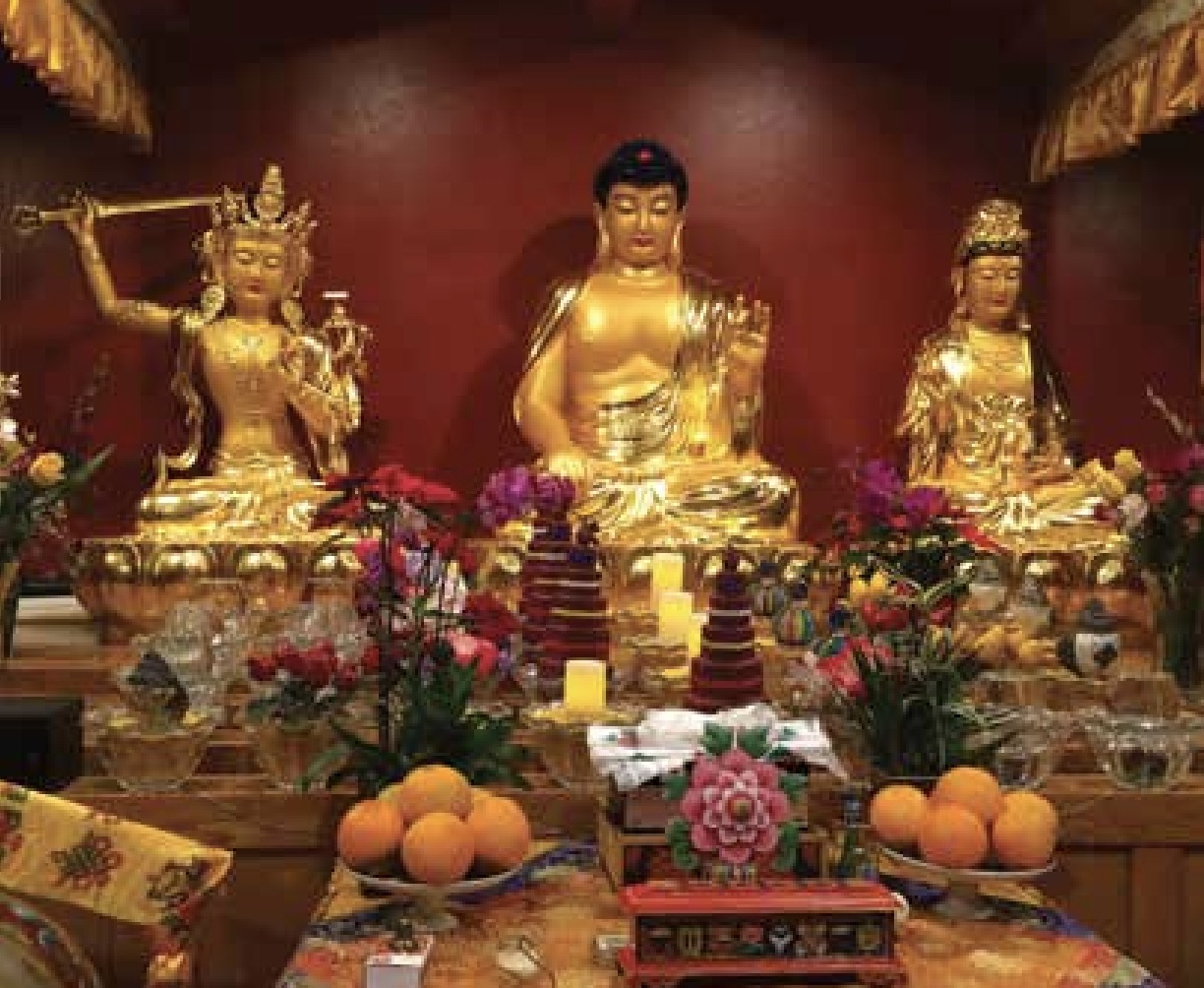
FIGURE 57: The Three Buddhas in place as the main altar at the Holy Vajrasana Temple.
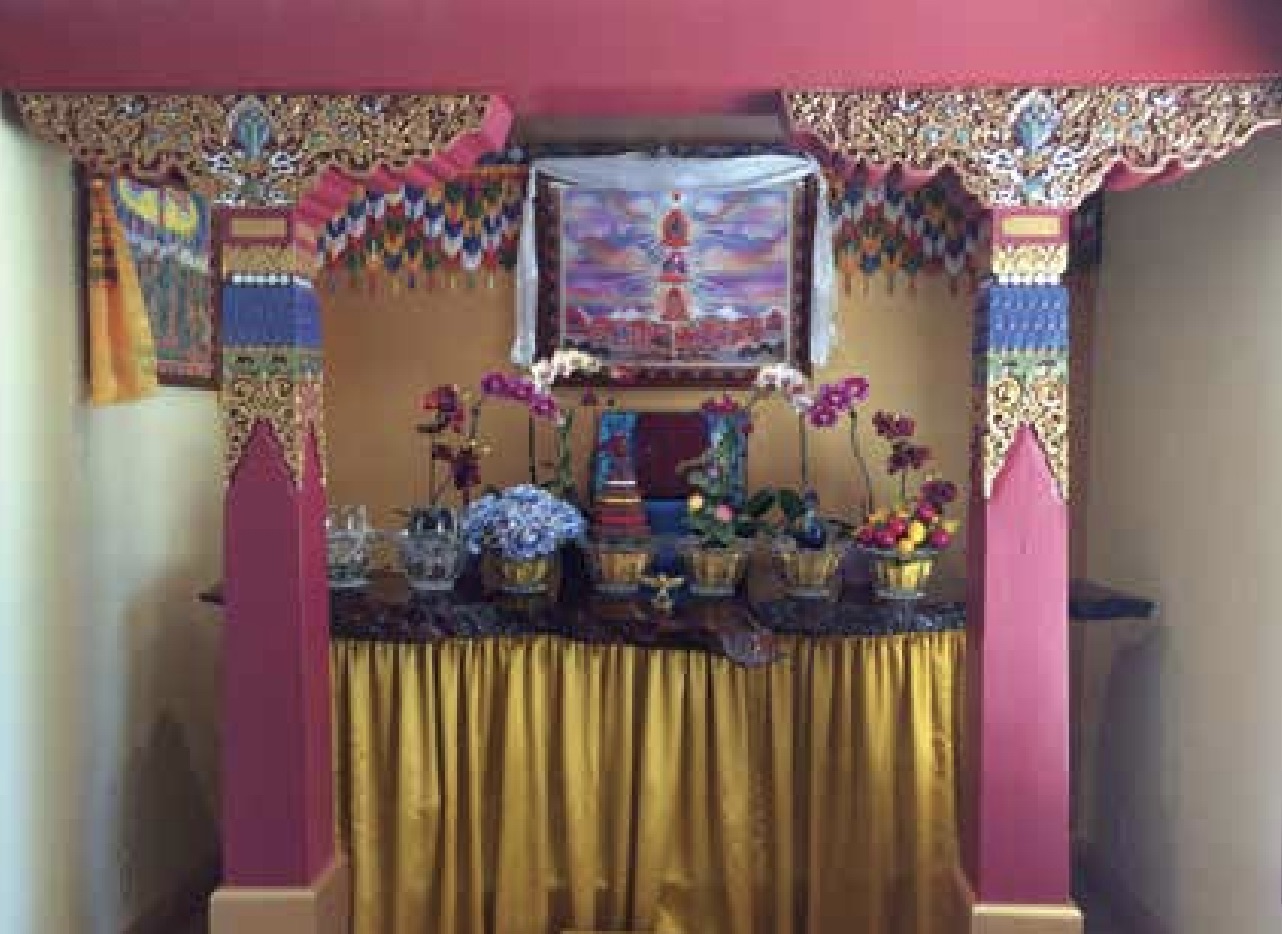
FIGURE 58: Flaming Jewel Tibetan columns inside of the Holy Vajrasana Temple at Dorje Chang Buddha Lineage Tree Altar.
We redesigned the entryway to use two of the Tibetan columns and give us a grander entranceway. Jiangba Luosang Rinpoche donated a lovely crystal chandelier for the entryway that had been in his home in Germany. Three more of the Tibetan columns could be used to enhance the interior and create another altar (FIGURE 58). Construction started in earnest with the new septic system being installed in December 2014. The main remodeling started early in 2015 and continued until a new wing was added to house the American Disability Act compliant bathrooms.
Bodhighara
Early, before the sun was too high, a dedication ceremony was held to establish a Bodhighara (Bodhi Tree Shrine) at the Holy Vajrasana Temple (FIGURE 59). Over 100 people including Holy Virtuous Ones, rinpoches, acaryas, Dharma masters, lay followers, and others attended the May 2014 ceremony which was held near the Holy Vajra Poles. I even brought the Holy Vajra Pill to the Dharma Assembly to bless the young Bodhi Tree and those present (FIGURE 60). I then read an original gatha paying homage to the Vajra Poles that were located next to the assembly.
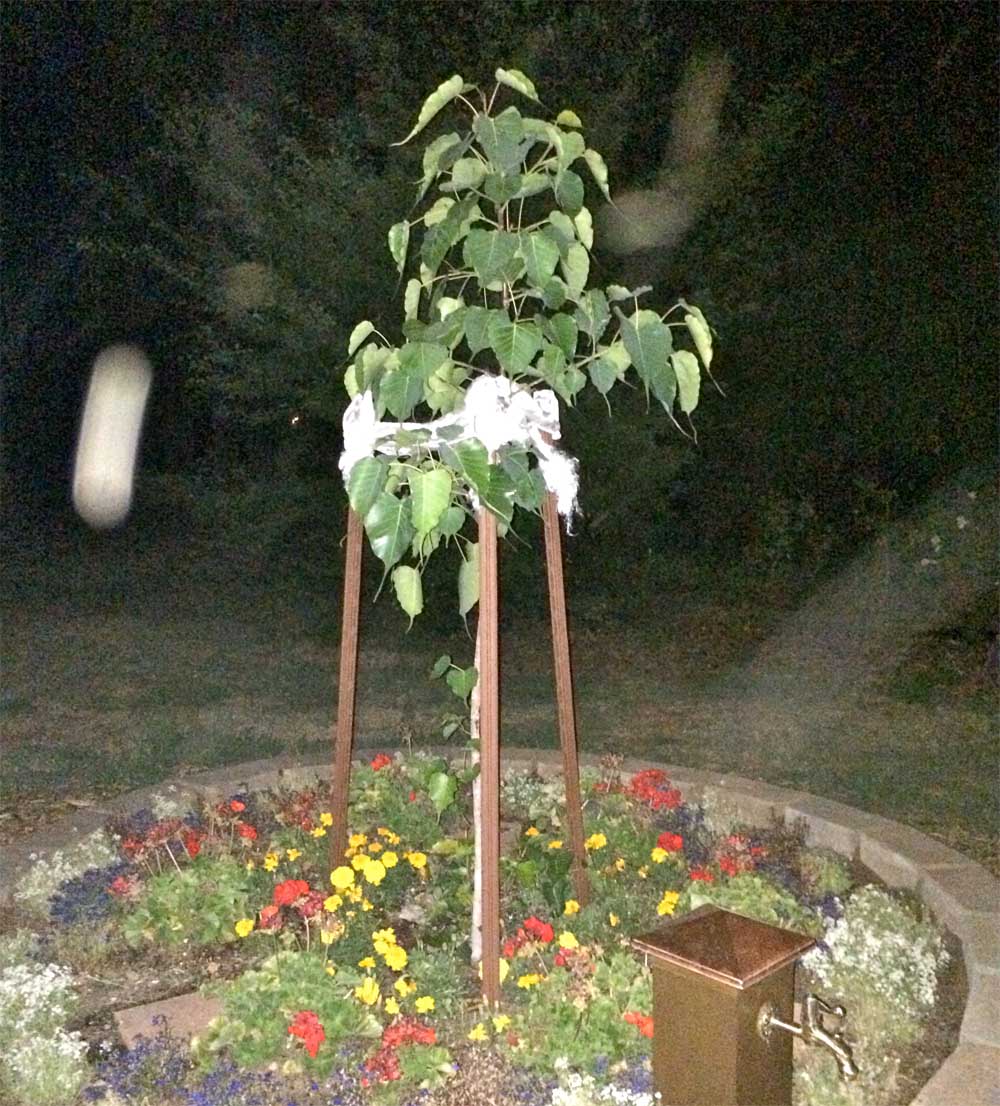
FIGURE 59: Bodhi Tree at the Holy Vajrasana Temple, Sanger, California.
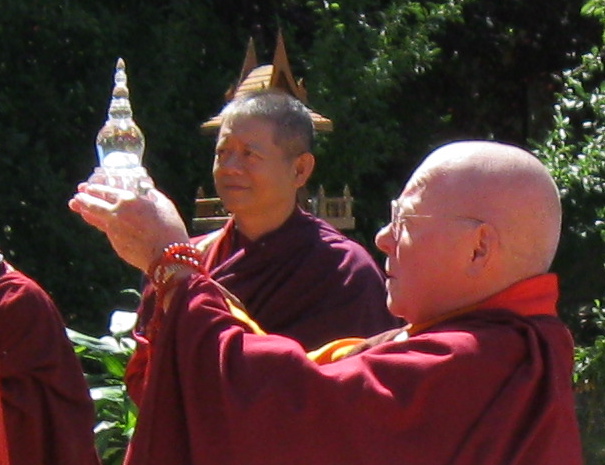
FIGURE 60: Zhaxi Zhuoma with Holy Vajra Pill at Bodhighara Dedication Ceremony at the Holy Vajrasana Temple and Retreat Center
The Sri Maha Bodhi Tree (Ficus religiosa) in Anuradhapura, Sri Lanka, is the oldest living human-planted tree in the world with a known planting date. The sacred tree, a descendent of the historical tree under which Shakyamuni Buddha sat to become enlightened in Bodhgaya, India, was brought to Sri Lanka in 288 BCE by the Ven. Sangamitta, the sister of Ven. Arahath Mahinda. The two venerables were the daughter and son of the Emperor Asoka who sent them as missionaries to the island. It has been tended by an uninterrupted succession of guardians for 2,300 years, even during the periods of foreign occupation and the many civil wars.
Sri Lankan Heads of State have sought the blessings of the Sri Maha Bodhi before commencing any important work. It is a very important site of pilgrimage for the devout. I visited this holy living symbol of the Buddha’s Enlightenment in Sri Lanka in 2012 with friends. Our guide told us after we left the site that a few years earlier the Tamil Tigers had machine gunned the pilgrims visiting the tree, but that story was not publicized. Anuradhapura is near the northern part of the island and close to the Tiger’s territory. We also noted very discreet military installations near the site, but when we were there, the soldiers were just mowing grass.
This descendent of the Sri Maha Bodhi Tree was installed as a Bodhighara near the Holy Vajra Poles at the site of our Holy Vajrasana Temple in Sanger. It is a precious reminder of how Shakyamuni Buddha sat under its ancestor over 2,500 years ago and obtained Anuttara-Samyak-Sambodhi. We express our gratitude to Shakyamuni Buddha and to His teacher, Dorje Chang Buddha for bringing us the most complete Buddha Dharma that can enable us to likewise become enlightened. We give our most humble thanks and offer our devotion to the magnificent Manifestation, H.H. Dorje Chang Buddha III who empowered this site as the Fourth Vajra Throne (Vajrasana) in the world today.
New Wing Installed—Vajra Poles Respond to Contractors
Early in 2015, the main remodeling of the building began and continued until a new wing was added to house the ADA compliant bathrooms. While working on the remodeling of the Holy Vajrasana Temple, Sean and Adam of Pacific Construction reported that they and Reuben, the electrician, had experienced the Vajra Poles shaking and could not believe what they saw. First one pole would shake, then stop while another started to vibrate until all five had exhibited their powers. When they told their supervisor, Charlie, he refused to believe them as did others they told. Understandably, it is hard to imagine that such a portal to other realms exists in this world. They were most fortunate to witness this, as many travel to this site from all over the world and may not see anything or only a slight tremble. The construction crew said a slight wind did come up, but in no way could that breeze cause the poles to behave like they did. Sometimes there is a certain type of wind that seems to accompany the poles, but at other times the poles do not move at all even in strong gales. It appears as if the poles cause this special wind to arrive and not the reverse. The poles are known to shake quite violently, but sometimes they only tremble or pulsate as if sending a coded message and sometimes they just stand there and do nothing. Visitors have also reported seeing light and waves of energy surround the poles. Those who come and meditate with the poles report being able to quickly enter a deep and profound state of concentration. These poles are amazing and seem to respond so differently to the different people who come to see them.
Bravachakra (Wheel of Life) Installed
In 2017 a large representation of the Wheel of Life (Bravachakra) was painted and installed in our Holy Vajrasana Temple and Retreat Center (FIGURE 61). This image is a symbolic representation of samsara or cyclic existence, dating to the time of Shakyamuni Buddha and holds the keys to ending suffering as taught by the Buddha. This original image was given by the Buddha to his friend, King Bimbisara of Magadha to explain samsara to King Rudrayana (Udayana). The other king had given King Bimbisara a very expensive gift of a jeweled robe and King Bimbisara did not know how to return the favor with something of equivalent value. The Buddha painted this image (or had it painted) and told the King that there was no greater gift he could give his friend. It is said that the other king became enlightened upon receiving and studying the gift. It is also said that Shakyamuni Buddha instructed His monks to have this image painted on the walls of every monastery so that ordinary and illiterate people could learn the true nature of samsara and how to escape it.
This is now one of many wonderful sites to see when you visit the temple. When the artist and his friend arrived with the painting and prepared to install it, they, of course, paid their respects to the Holy Vajra Poles. All five of the Holy Vajra Poles responded by immediately shaking to greet them.
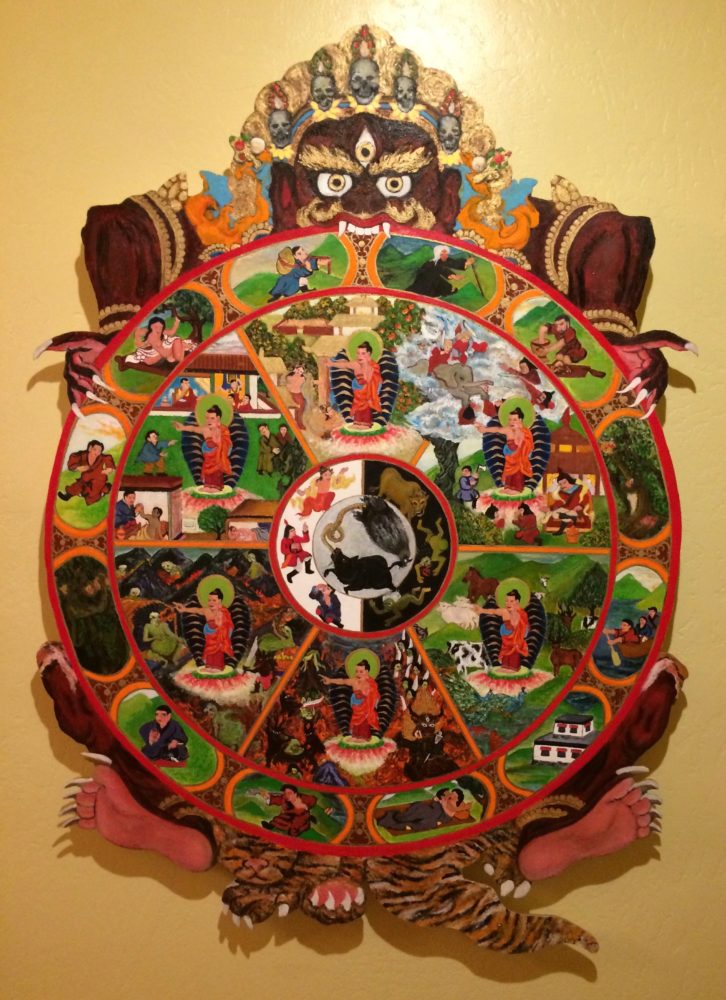
FIGURE 61: Bravachakra (Wheel of Life) painting installed at Holy Vajrasana Temple.

